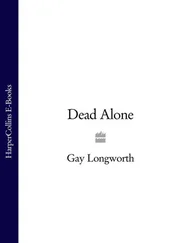It is said that Peter the Great left a testament encapsulating his advice to his successors on how to enlarge the Empire. Indeed, France’s Ministry of Foreign Affairs contains a copy of this plan for the domination of Europe. It begins with exhortations to Europeanize Russia and to keep it in a perpetual state of war ‘in order to harden the soldier and militarize the nation’. All possible means were to be used to expand in both the Baltic and the Black Sea regions. More particularly, Sweden was to be softened up for subjugation by stirring up England, Brandenburg and Denmark against her. Similar indirect means were recommended to assist Russia’s advance in other directions.
In this document an alliance with Habsburg Austria against the Turks was advised in order to ‘facilitate Russia’s expansion to Constantinople’, and, while the Habsburgs were being sapped of strength by war in the Balkans, their German neighbours were to be stirred up against them. To this end and others, Russia should ‘contract marriage alliances in Germany in order to gain influence there’, and use every opportunity to become involved in the quarrels of Germany and indeed of all Europe. ‘Encourage anarchy in Poland with the object of subjugating it,’ and ‘use religious dissent to disrupt Poland and Turkey’.
Commercial imperialism was central to the plan. The English should be courted and brought into a ‘close commercial alliance’, because it was through them that Russia could acquire the necessary commercial and naval skills to acquire a world empire. Outside Europe the objective should be the Levant, because by controlling the eastern Mediterranean Russia could monopolize ‘the commerce of the Indies and thus become the true sovereign of Europe’.
The final step would be to make secret proposals to both Habsburg Austria and Bourbon France, offering each a half share, with Russia, in the domination of the world, while getting them embroiled in an exhausting war with each other. Then, at an appropriate moment, Russia would join Austria and march its troops to the Rhine. At the same time two large fleets would sail from Archangel and Azov and head for the Mediterranean, there to disgorge swarms of ‘nomadic and greedy’ Asiatic peoples who would overrun Italy, Spain and France, carry off much of the population to settle in Siberia, and subjugate the remainder. 29
As we have seen, several strategies recommended in the document had already been implemented by Peter. Others were to become evident in Russian policies later in the eighteenth century All this gives the testament the ring of truth. Yet it is spurious. Its vision of a European Armageddon is imaginative rather than practical, and the mindset that created the document is quite un-Russian. Indeed, the document turns out to have been composed later in the century, using ideas deriving from Ukrainian exiles, Poles, Hungarians and Turks, probably by the notorious diplomat the Chevalier d’Eon. Its purpose was to arouse fear of Russian expansionism in Europe, and France had ample motive to use it.
France was in a state of accelerating decline since the grand reign of Louis XIV. It had been Sweden’s ally and had seen it defeated. It had worked closely with the Turks, but feared their powers were waning. It was Britain’s rival at sea, but increasingly apprehensive of its competitiveness, especially since Britain had drawn close to Austria, France’s rival on land. And now upstart Russia was empire-building at a dangerous rate. Just as Polish diplomats and German publicists had whipped up fear of Ivan the Terrible’s Russia, so France now encouraged fears of an insatiable Russia swallowing all Europe. It contributed to the pervasive fears of later ages too. The growth of an empire reflects power; it may bring wealth, and it certainly attracts enemies.
IT HAS BEEN argued that empires, like companies, must grow or die, that an expanding empire generates costs that can only be met with more resources, and that these resources can only be found by further conquests. 1The principle may only apply to continental empires based on agriculture, like that of the Aztecs of Mexico, the Incas of Peru or the empire of Kievan Rus — though China seems to be a doubtful case — but the second Russian Empire seems to conform to it. Governments have a chronic disposition to outspend their incomes, of course, but Russia’s financial plight after Peter’s death (to the extent that it can be established from the record) seems to have been serious. As the British minister to the Russian court, Claudius Rondeau, remarked in 1730, with only a little exaggeration, ‘They have not a shilling in the treasury, and, of course, nobody is paid.’ 2
Certainly the decades that followed Peter’s death were to see brilliant advances on almost every front. Russia’s armies and fleets were to win astonishing victories over militaristic Prussia in the Seven Years War and over the underestimated Ottoman Turks in two subsequent wars. Russia was to prevail in yet another war with Sweden, and, besides fighting a series of lesser engagements with steppe nomads, Persia and wild tribes of the Caucasus, was to be largely instrumental in sweeping the armies of revolutionary France out of northern Italy in 1799. Russia’s generals and admirals were showered with gem-encrusted orders, diamond-studded swords, and exquisite gold or enamel snuffboxes by their generous monarchs as tokens of their appreciation — and, not surprisingly, because they had made huge strategic gains for the Empire.
By 1800 Poland was erased from the map of Europe, the greatest part of it swallowed by her age-long antagonist, and Russia had also pushed out her frontiers in Central Asia, acquired a bridgehead in North America, taken the Crimea, established itself on the Danube estuary, and become a power in the Mediterranean as well as the Black Sea, the Baltic and the Pacific.
And, despite Peter’s efforts, all this was accomplished by a state which was regarded as institutionally ramshackle as well as financially weak. As Edward Finch, Britain’s envoy in St Petersburg, reported in 1741.
After all the pains which have been taken to bring this country into its present shape… I must confess that I can yet see it in no other light, than as a rough model of something meant to be perfected hereafter, in which the several parts do neither fit nor join, nor are well glewed [sic] together, but have been only kept so first by one great peg and now by another driven though the whole, which peg pulled out, the whole machine immediately falls to pieces. 3
Peter himself had served as the first peg. But who now could keep the Empire from crumbling?
Eighteenth-century Russia was dominated by women. Of Peter’s immediate successors, his widow, Catherine I, his half-niece Anna and his daughter Elizabeth together ruled Russia for more than thirty-two of the thirty-six years following his death, and Catherine II, known as ‘the Great’, reigned for more than thirty years thereafter. Peter II (1727—30), Ivan VI (1740-41) and Peter III (1761-2) interrupted the sequence, but had little impact on events.
The fact that most of these rulers were women did not diminish their authority, though there was some muted grumbling among the lower orders. However, none of them had received an education to fit them for supreme office, and apart from Catherine II they tended to be rather more dependent on one or two trusted advisers than most rulers. Cronyism and factionalism do seem to have increased at the Russian court, though this may be an impression given by observers who expected it to be so. The eighteenth century was a heyday for gossips. Empress Anna’s favourite, Biron (Bühren), was the dominant figure in the government, yet not — in Finch’s view at least — the linchpin that was needed. That function, he thought, was fulfilled by Count Andrei [Heinrich] Ostermann.
Читать дальше





![Stephan Orth - Behind Putin's Curtain - Friendships and Misadventures Inside Russia [aka Couchsurfing in Russia]](/books/415210/stephan-orth-behind-putin-s-curtain-friendships-a-thumb.webp)





